Ever noticed how certain trucks command attention when they roll by? Not just any trucks – we’re talking about those heavy-duty beasts that make even the boldest pickup owners do a double-take.
Let’s cut through the noise. If you’re serious about hauling power, towing capacity, or just plain dominating the highways, you need to know which heavy-duty trucks actually deliver on their promises.
I’ve spent countless hours testing these monsters, talking with career truckers, and analyzing performance data. What follows is the definitive ranking of heavy-duty trucks that truly own the road – not just in commercials, but in real-world conditions.
And wait until you see which legendary manufacturer didn’t even crack our top three. The reason why might change how you view truck engineering forever.
The Evolution of Heavy-Duty Trucks
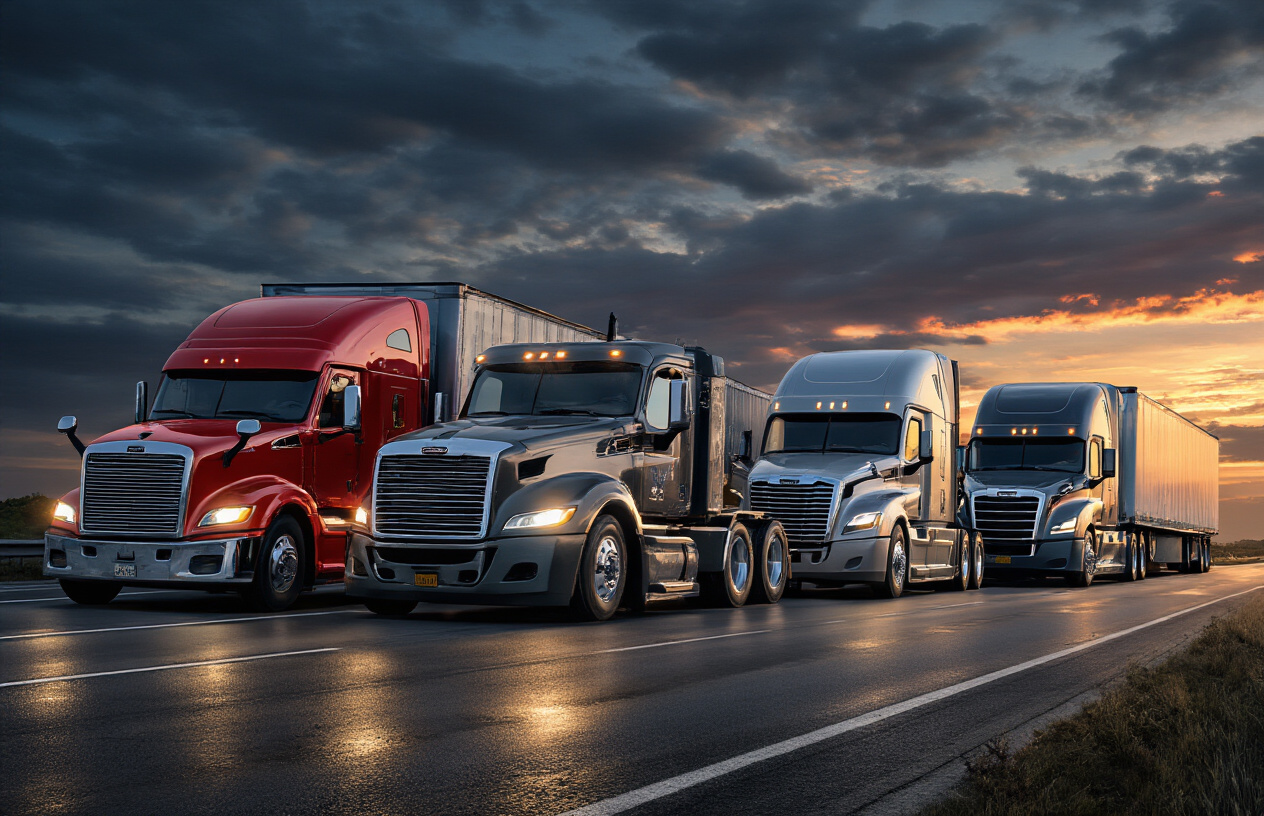
From Workhorses to Modern Powerhouses
Remember those old trucks from the 1950s? They were tough—but nothing like today’s monsters. Early heavy-duty trucks were basically engines with wheels and a flatbed. Drivers sat in metal cabs with zero comfort, wrestling manual transmissions and mechanical steering all day.
Fast forward to 2023, and you wouldn’t recognize them. Today’s trucks are technological marvels that would make those old-school drivers’ jaws drop. We’ve gone from bare-bones workhorses to rolling command centers with aerodynamic designs that slice through air resistance.
The cab transformation is mind-blowing. Drivers now enjoy climate control, premium sound systems, and seats that feel like living room recliners. Some cabs even have full sleeping quarters that rival small apartments.
Key Innovations That Changed the Industry
The truck industry took a massive leap when electronic engine management arrived. Gone are the days of tweaking carburetors and hoping for the best. Now, computers optimize everything from fuel injection to exhaust management.
Automatic and automated manual transmissions changed the game too. Drivers can focus on the road instead of constantly shifting gears. This means less fatigue and more efficiency.
But the real revolution? Connectivity. Modern trucks are rolling data centers, transmitting performance metrics, location info, and maintenance needs in real-time. Fleet managers can track entire operations from their phones.
Why Size and Power Matter in Today’s Economy
In our Amazon-everything world, bigger trucks mean bigger efficiency. The math is simple: more cargo per trip equals fewer trips needed, which means lower costs and smaller carbon footprints per ton moved.
Power isn’t just about bragging rights—though 600+ horsepower engines are definitely brag-worthy. It’s about climbing steep grades fully loaded without becoming a rolling roadblock. It’s about maintaining highway speeds with 80,000 pounds behind you.
And with global supply chains stretching longer than ever, reliability is paramount. Today’s economy doesn’t just want power—it demands dependability. One broken-down truck can disrupt thousands of deliveries and cost millions in lost time.
What Makes a Truck “Heavy-Duty”
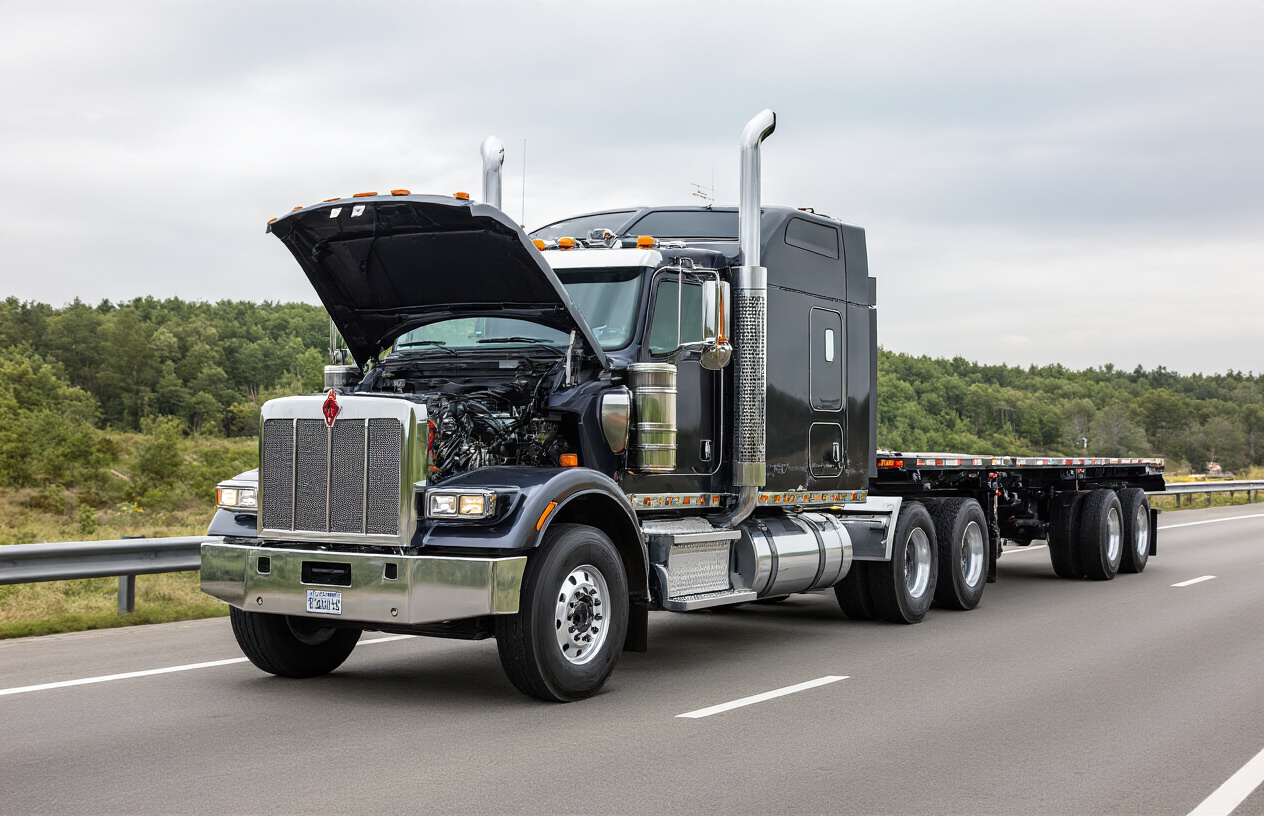
Classification Systems Explained
Ever wondered why some trucks look like they could tow a house while others struggle with a small trailer? It’s all in the classification.
In the US, trucks fall into classes 1-8, with heavy-duty trucks starting at Class 7 (26,001-33,000 lbs) and maxing out at Class 8 (33,001+ lbs). These monsters aren’t just bigger—they’re built differently from the ground up.
Europe uses a different system, categorizing by gross vehicle weight rating (N1, N2, N3), with N3 vehicles weighing over 12 tons qualifying as heavy-duty.
Weight Ratings and Their Significance
The numbers don’t lie in the trucking world:
| Rating Type | Description | Why It Matters |
|---|---|---|
| GVWR | Gross Vehicle Weight Rating | Maximum operating weight including chassis, body, engine, fuel, accessories, driver, passengers, and cargo |
| GCWR | Gross Combined Weight Rating | Maximum weight of vehicle plus trailer |
| GAWR | Gross Axle Weight Rating | Maximum weight each axle can carry |
When we’re talking heavy-duty, we’re looking at trucks with GVWRs exceeding 26,000 pounds. These ratings aren’t just technical specs—they determine everything from licensing requirements to road restrictions.
Engine Power Requirements
Heavy-duty trucks don’t mess around with puny engines. We’re talking 6-cylinder or 8-cylinder diesel powerhouses pumping out 400+ horsepower and—this is where it gets impressive—over 1,000 lb-ft of torque.
This massive torque is delivered at low RPMs, perfect for getting massive loads moving from a standstill. Diesel engines dominate this category because they deliver the long-lasting, reliable power needed for commercial applications.
Durability Features That Define the Category
Heavy-duty trucks aren’t just big cars with beds. They’re engineering marvels designed to take punishment:
- Reinforced frames built with high-strength steel
- Heavy-duty cooling systems that prevent overheating under constant load
- Transmission systems with specialized gearing for hauling
- Commercial-grade braking systems that can stop 80,000 pounds safely
- Air suspension systems that adjust to load weight
These trucks feature serviceability by design—components built for quick replacement and minimal downtime because in the heavy-duty world, time off the road equals money lost.
Freightliner Cascadia: The American Icon
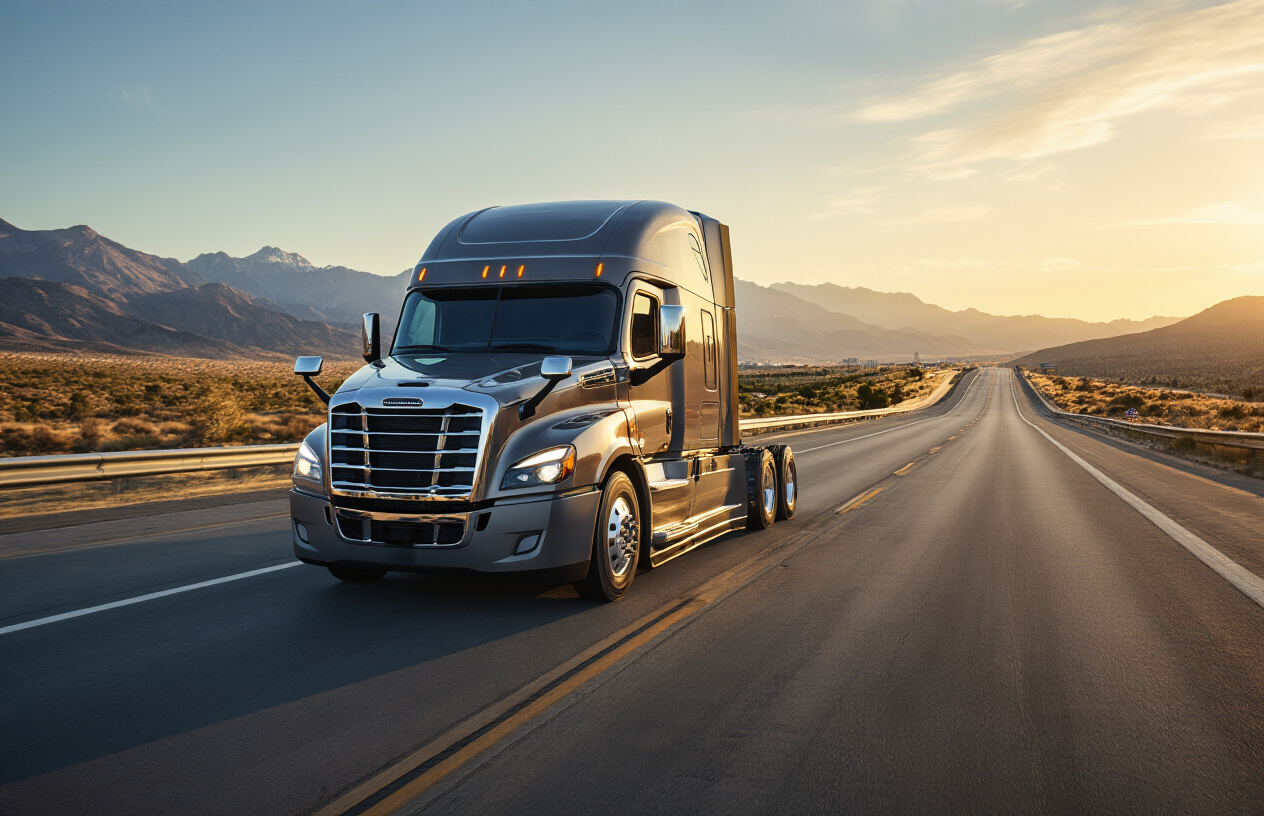
Revolutionary Aerodynamic Design
The Cascadia isn’t just another truck on the highway—it’s a rolling testament to what happens when engineers obsess over every curve and edge. Freightliner didn’t just tweak the previous models; they completely reimagined what a truck could be.
Have you noticed how it slices through the air? That’s no accident. The sloped hood, integrated bumper, and those side extenders aren’t just for looks. They cut through wind resistance like nothing else in its class, delivering up to 8% better fuel economy than previous models.
Every single panel on this beast was wind-tunnel tested. Even those mirrors—typically awful for drag—were redesigned to minimize their impact. The result? A truck that whispers through the air instead of fighting it.
Detroit Diesel Power and Efficiency
The heart of the Cascadia is its Detroit Diesel engine lineup, and boy, these aren’t your grandfather’s diesels.
The DD15 and DD13 engines don’t just deliver raw power—they do it with shocking efficiency. We’re talking about engines that can pull 80,000 pounds while still delivering up to 1,850 lb-ft of torque and doing it with fuel consumption that makes fleet managers smile.
What’s crazy is how these engines keep getting better. The latest generation features variable cam timing that adjusts on the fly, intelligent turbocharging, and thermal management systems that keep everything running at optimal temps.
Driver-Focused Cabin Technology
Step inside a Cascadia and you’ll wonder if you’re in a truck or a spaceship. The dashboard display isn’t just digital—it’s customizable to show exactly what the driver needs.
The Detroit Assurance 5.0 safety suite is mindblowing. Active Brake Assist, Adaptive Cruise Control, Lane Departure Warning—this truck practically drives itself. And that Detroit Connect platform? It’s like having a mechanic riding shotgun, constantly monitoring every system.
Drivers spending weeks on the road deserve comfort, and Freightliner delivers. The ergonomic seats adjust 12 ways, the climate control maintains perfect temps, and there’s enough storage to pack for a month on the road.
Impressive Hauling Capabilities
Numbers don’t lie, and the Cascadia’s stats are impressive. With a GVWR of up to 80,000 pounds and configurations that can handle special loads exceeding 100,000 pounds, this truck doesn’t flinch at heavy loads.
The Detroit DT12 automated manual transmission is a game-changer. It shifts perfectly every time, extracting maximum efficiency from the engine while making the driver’s job easier. Combined with the Cascadia’s aerodynamics, this powertrain creates a hauling machine that’s both powerful and economical.
Fleet operators love the Cascadia’s reliability metrics. With service intervals stretched to 50,000 miles and components designed for a million-mile lifespan, this truck spends more time earning money and less time in the shop.
Kenworth W990: Long-Hood Powerhouse
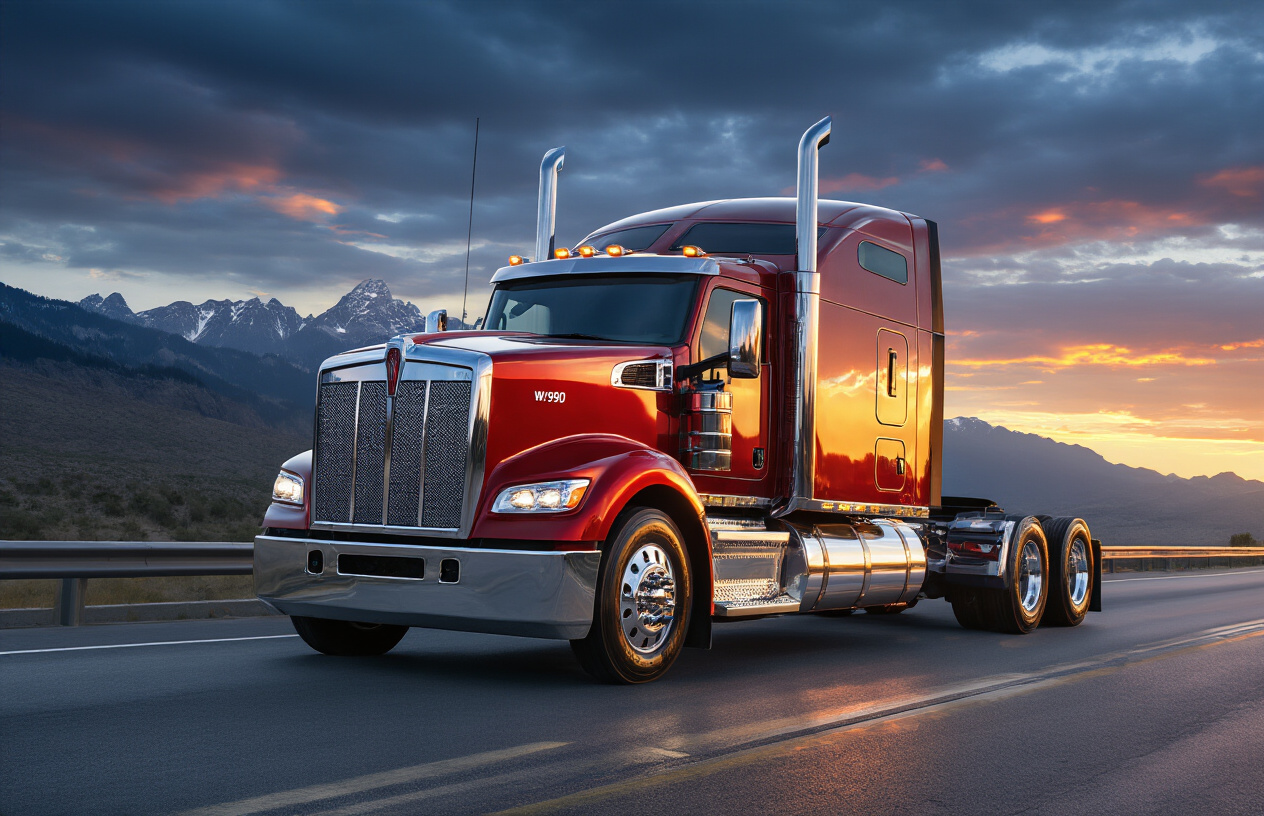
Classic Design Meets Modern Engineering
The W990 isn’t just another truck. It’s Kenworth’s bold statement on wheels.
This beast carries the torch from the legendary W900 with that unmistakable long hood that commands respect on every highway. But don’t think for a second this is just about nostalgia.
Kenworth took everything truckers loved about the classic silhouette and packed it with cutting-edge tech. The aerodynamics? Completely reimagined while preserving that iconic profile. The hood, grille, and fenders work together to slice through air resistance without sacrificing that head-turning style.
Inside the cab, digital displays sit comfortably next to chrome switches – a perfect marriage of old-school cool and modern functionality.
PACCAR Engine Performance
Pop the hood and you’ll find the heart of this road warrior – PACCAR’s MX-13 engine. This isn’t your average power plant.
The MX-13 delivers up to 510 horsepower and a massive 1,850 lb-ft of torque. Those aren’t just numbers – that’s the difference between struggling up a mountain pass and conquering it.
What really sets this engine apart is how it balances raw power with surprising efficiency. The advanced fuel injection system squeezes more miles from every gallon without compromising performance.
Paired with the 12-speed automated transmission, the W990 gives drivers precise control whether they’re hauling through city traffic or climbing steep grades with 80,000 pounds behind them.
Luxury Features for Long-Haul Comfort
Peterbilt 579: Legendary Reliability
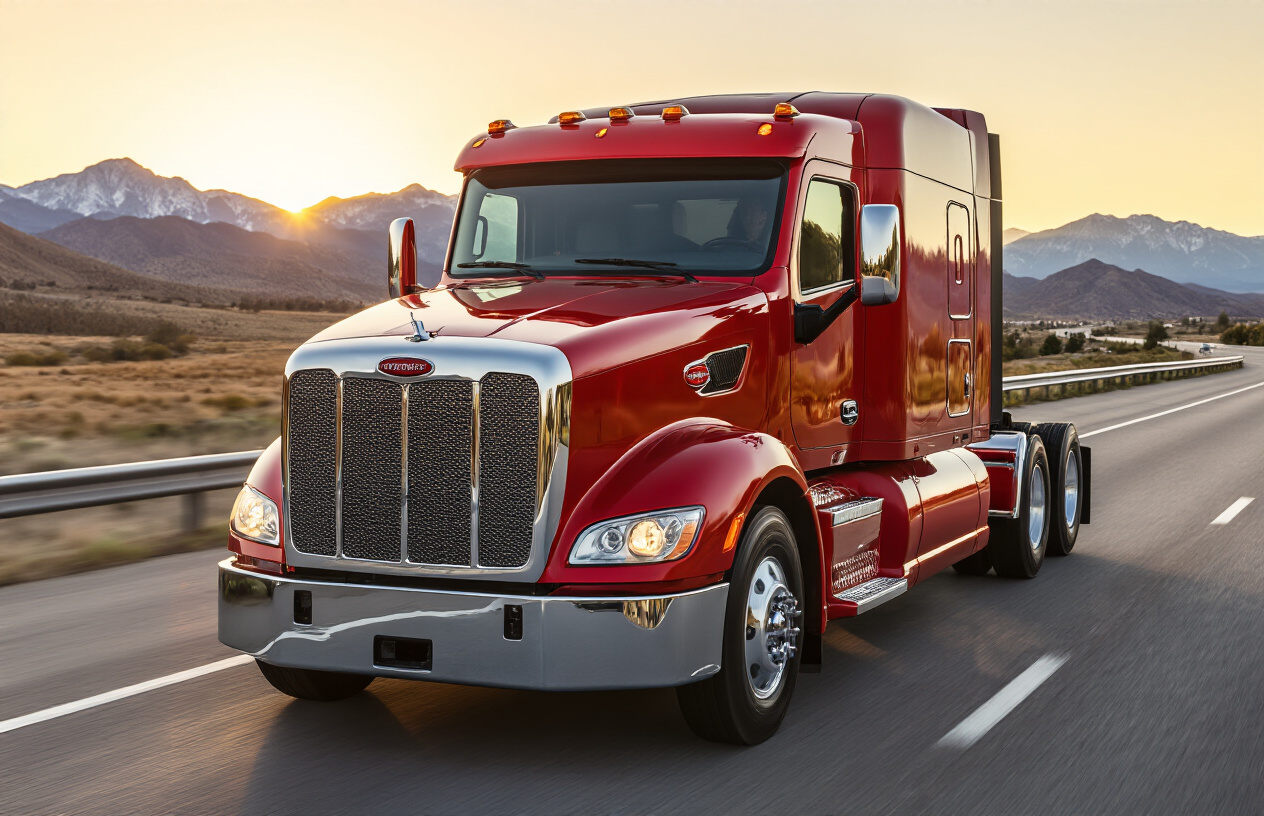
When truckers talk about legends on the road, the Peterbilt 579 always comes up. This beast isn’t just about looks – it’s built to last through hundreds of thousands of miles while keeping drivers comfortable and fleet managers happy.
Fuel Economy Innovations
The 579 isn’t playing around when it comes to saving fuel. Peterbilt engineers weren’t satisfied with “good enough” – they obsessed over every detail that could squeeze more miles per gallon.
The aerodynamic design isn’t just for show. Those sleek lines cut through air resistance like a hot knife through butter, saving up to 7% on fuel compared to older models. And that PACCAR MX-13 engine? It’s tuned to hit the sweet spot between power and efficiency.
What truck drivers really appreciate is the predictive cruise control that actually learns routes. The truck anticipates hills and adjusts speed automatically, so you’re not burning unnecessary fuel.
Advanced Safety Systems
Safety in the 579 isn’t an afterthought – it’s built into the DNA of the truck.
The collision mitigation system doesn’t just warn you about potential accidents – it takes action, applying brakes when needed. Lane departure warnings have saved countless drivers from drifting during those long hauls when eyelids get heavy.
But my favorite feature? The 360° camera system that eliminates blindspots completely. No more guessing what’s lurking beside your 18 wheels.
Customization Options for Any Job
The 579 refuses to be a one-size-fits-all solution.
Need to haul refrigerated goods across states? There’s a config for that. Hauling hazardous materials? Peterbilt’s got specialized options that meet every regulation.
The interior options range from functional to downright luxurious. Leather seats, premium sound systems, and sleeper cabs with enough room to do jumping jacks – they’ve thought of everything.
What makes the 579 special is how you can build it exactly for your needs without sacrificing that legendary Peterbilt reliability.
Volvo VNL: European Engineering Excellence
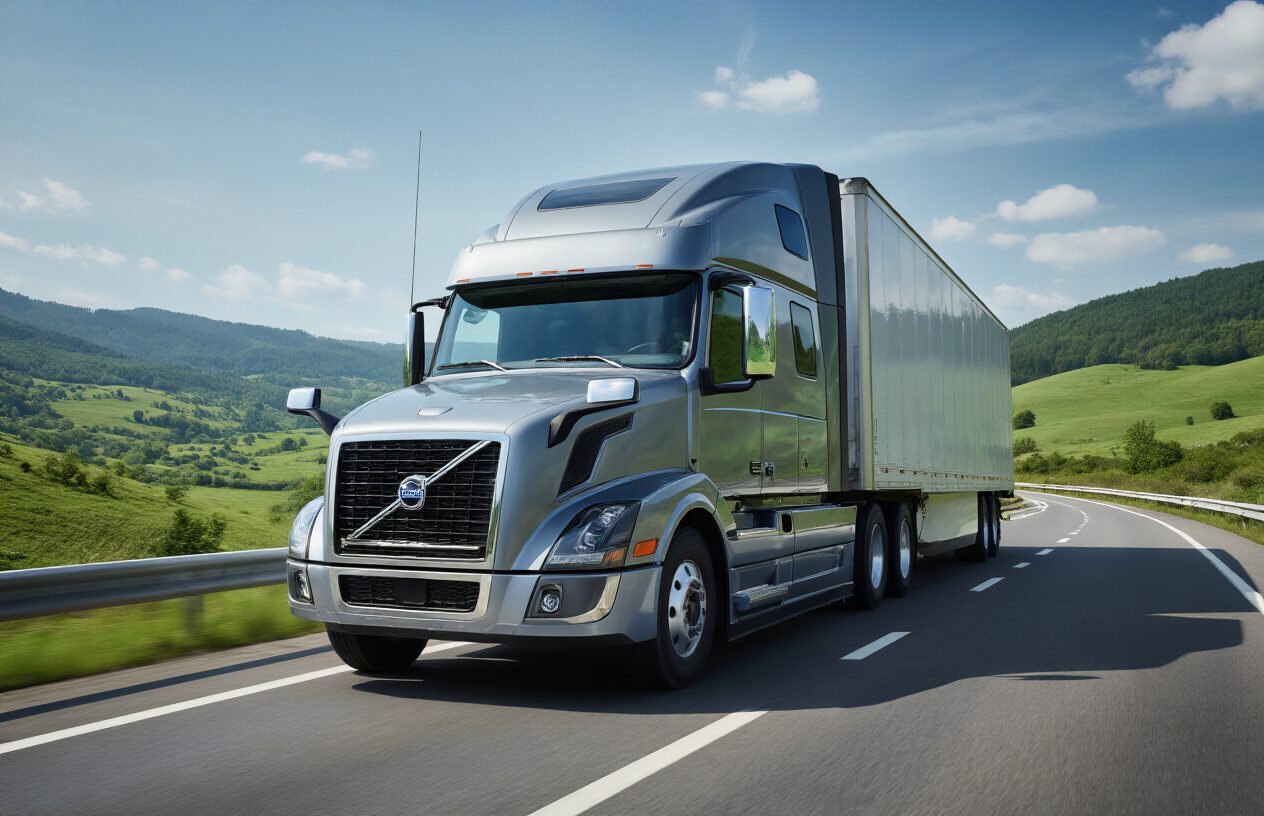
Industry-Leading Safety Technology
Volvo isn’t messing around when it comes to safety. Their VNL trucks pack more safety tech than your smartphone has apps. The standout? Volvo Active Driver Assist. This system doesn’t just warn you about potential collisions—it takes action, applying brakes automatically when needed.
The blind spot detection system is a game-changer for highway driving. Truckers know the nightmare of lane changes in an 80-foot rig. This system gives you eyes where mirrors can’t reach.
And let’s talk about the stability control. Hit an icy patch or swerve suddenly? The VNL’s electronic stability control kicks in before you even realize you’re in trouble.
I-Shift Transmission Advantages
The I-Shift transmission is flat-out revolutionary. What makes it special? It thinks for itself. This automated manual transmission calculates the perfect shift point based on grade, load weight, and throttle position.
Truckers who’ve switched to the I-Shift report saving their left leg from the clutch-mashing marathon of traditional transmissions. Less fatigue means safer driving.
Here’s the kicker: it saves serious fuel. How? By hitting the sweet spot of the power band every single time.
| Feature | Benefit |
|---|---|
| Grade Sensor | Perfect shifts on hills |
| Eco-Roll | Engine disengagement on downhills |
| I-See | Memorizes routes for optimal shifting |
Driver Comfort Innovations
The VNL cabin isn’t just a workplace—it’s a living space. Volvo understands truckers spend more time in their cabs than their homes.
The ergonomic dashboard places every control within easy reach. The steering wheel? Loaded with buttons so you never take your hands off the wheel.
Sleep quality matters, and the premium mattress in the VNL rivals what you’d find in high-end hotels. The cabin insulation keeps things whisper-quiet, whether you’re parked at a noisy truck stop or cruising down the highway.
Climate control zones mean the driver and passenger can set their own perfect temperature. No more fights over the thermostat.
Impressive Fuel Economy Stats
The numbers don’t lie. VNL trucks consistently outperform competitors in fuel efficiency tests. We’re talking 8-10% better MPG than industry averages.
The D13 engine with turbo compounding recovers waste energy that other trucks just throw away. This technology alone adds up to 2% in fuel savings.
The aerodynamic design isn’t just for looks. Wind tunnel testing has shaped every curve and angle to slice through air resistance. The front grille, side fairings, and roof spoilers work together to cheat the wind.
Predictive cruise control uses GPS to know what’s coming—hills, curves, and traffic patterns—adjusting speed before you get there. This intelligent approach to speed management can save another 3% in fuel costs.
Mack Anthem: American Muscle
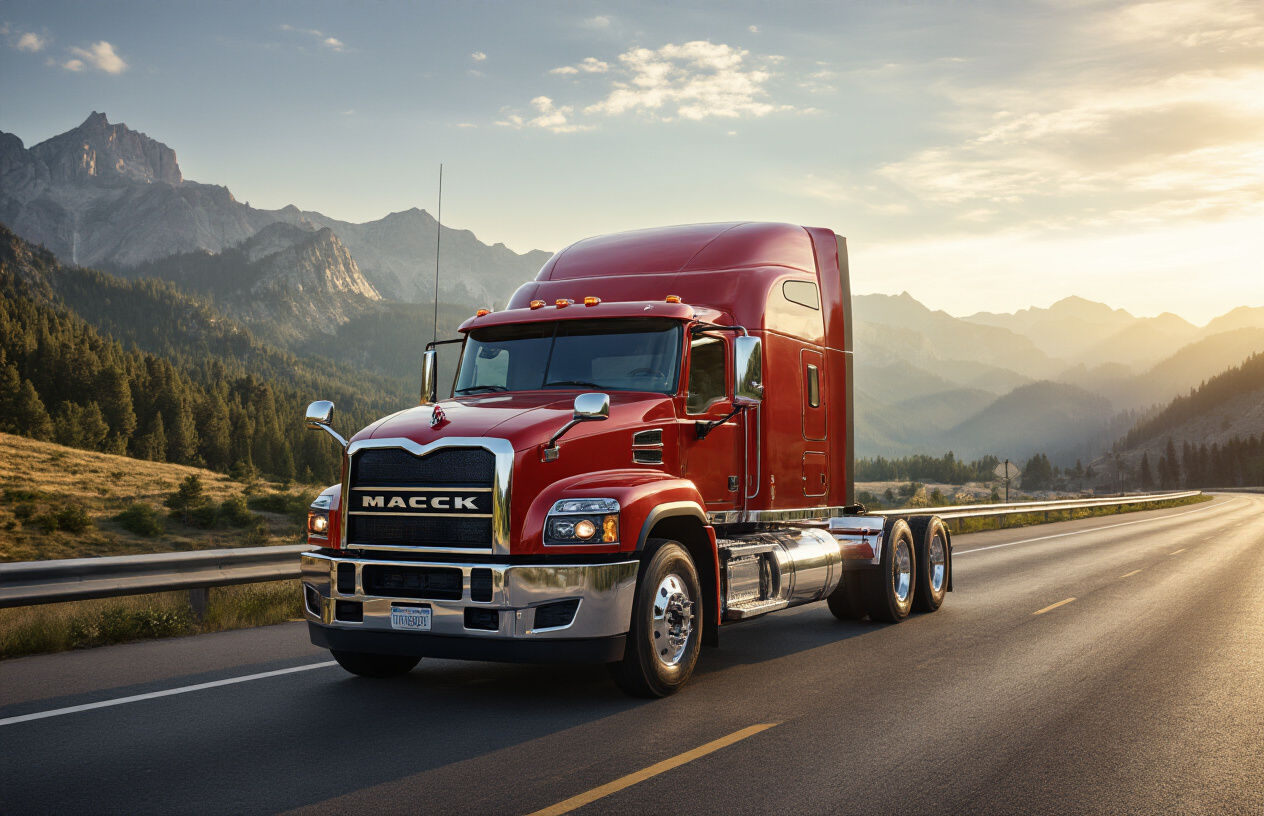
MP Engine Series Power
The Mack Anthem doesn’t just look tough – it’s got the muscle to back it up. At its heart beats the legendary MP engine series, offering raw American power that hauls even the heaviest loads like they’re nothing.
The MP8 is the workhorse of the lineup, pumping out up to 505 horsepower and a massive 1,860 lb-ft of torque. That’s serious pulling power when you’re climbing steep grades with 80,000 pounds behind you.
For drivers who need even more grunt, the MP8-TC adds turbo compounding technology that captures wasted exhaust energy and converts it back to power. Smart stuff that gives you an extra punch while saving fuel.
What sets these engines apart isn’t just raw numbers – it’s their flat torque curve that delivers power exactly when you need it. No waiting for the engine to catch up when you press the pedal.
Built-for-Business Interior Design
Climb into an Anthem’s cab and you’ll immediately notice this isn’t some pretty showpiece – it’s a working truck designed by people who actually understand trucking.
The dash layout is pure common sense, with critical controls positioned within easy reach. No stretching or hunting for important switches while you’re driving. Everything’s right where your hand naturally falls.
The steering wheel comes packed with controls that let you keep your eyes on the road while adjusting cruise settings or cycling through dash displays.
Mack didn’t forget you live in this space. Storage options are everywhere – overhead bins, door pockets, and smart compartments throughout. The stand-up height in sleeper models gives you room to change clothes without contorting yourself like a pretzel.
Distinctive Styling with Purpose
The Anthem’s bold look isn’t just for show. That massive grille with vertical slats isn’t trying to win beauty contests – it’s engineered to maximize airflow to the cooling systems.
Those hood-mounted mirrors? They’re positioned to eliminate blind spots while minimizing wind resistance. Even the headlights serve double duty – the distinctive LED pattern makes you instantly recognizable on the road while providing superior nighttime visibility.
The aggressive fenders and bumper design aren’t just tough-looking – they’re shaped to direct air around the truck, cutting through wind resistance that would otherwise burn extra fuel.
Every curve and angle on this truck was wind-tunnel tested. The result? Up to 3% better fuel economy compared to previous Mack models.
Integrated Powertrain Benefits
Mack’s biggest advantage might be that they build the entire powertrain in-house. Engine, transmission, and axles are all designed to work together as a single system.
The mDRIVE automated manual transmission reads the road, the load, and your driving style to pick the perfect gear. No more hunting between gears on hills or wasting fuel with poor shift timing.
This integration means power flows seamlessly from engine to wheels, with each component supporting the others instead of fighting them. The result is better fuel economy, reduced maintenance, and longer component life.
Software updates improve the entire system at once, not just individual parts. When Mack engineers tune the powertrain, they’re looking at how everything works together – not just optimizing one component at the expense of others.
International LT Series: The Distance Runner
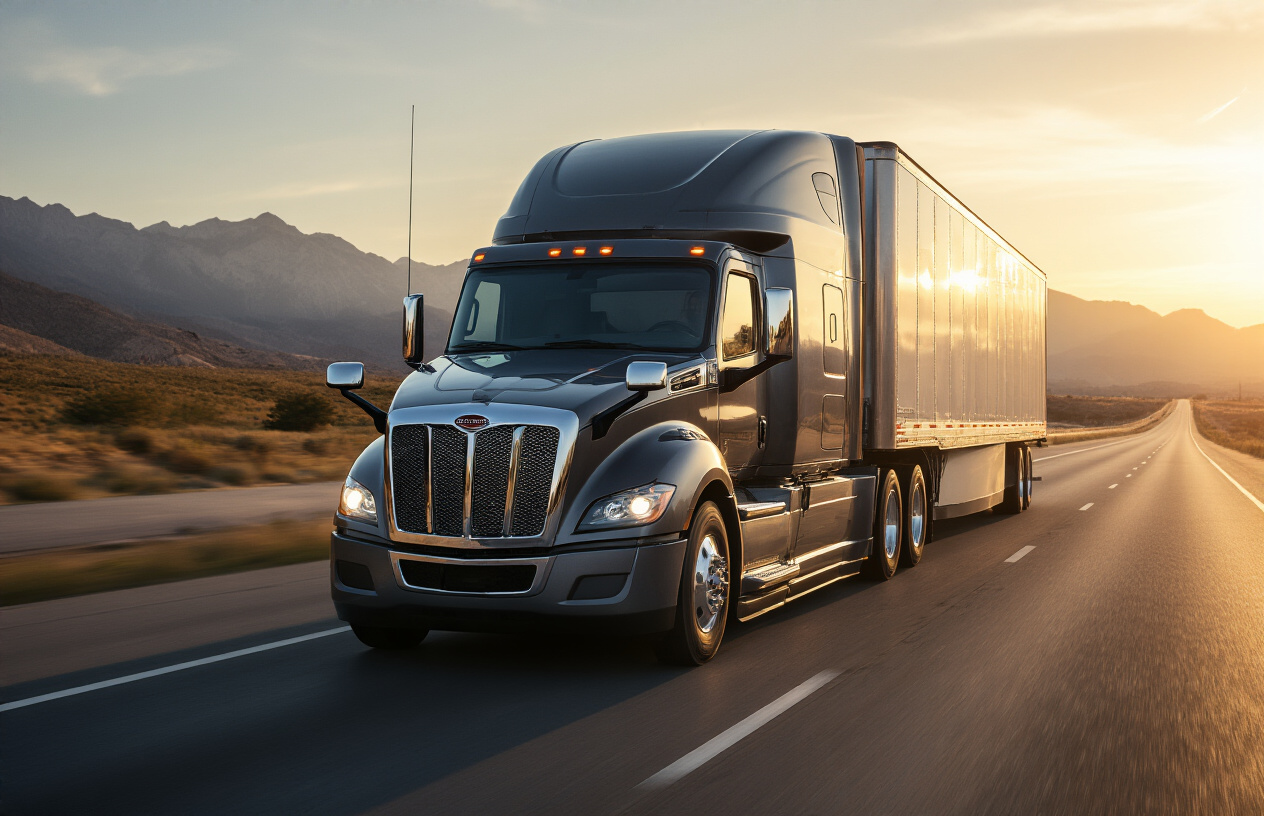
A13 Engine Performance Metrics
The International LT Series doesn’t just look tough—it delivers where it counts. The A13 engine is a beast, cranking out up to 515 horsepower and 1,850 lb-ft of torque. That’s serious pulling power when you’re hauling massive loads cross-country.
Fuel efficiency? The A13 doesn’t disappoint. Drivers report getting up to 8% better MPG compared to previous models. On long hauls, that adds up to thousands saved annually.
What really sets this engine apart is its durability. With oil change intervals stretching to 70,000 miles, you’re spending less time in the shop and more time earning. The A13’s advanced cooling system keeps temperatures in check even when pulling max loads up steep grades.
Uptime Maximizing Features
The LT Series wasn’t built just to run—it was built to keep running. The electrical system features a self-diagnosing design that spots issues before they become roadside emergencies.
Remote diagnostics come standard, sending real-time alerts to your fleet manager and suggesting service centers nearby. Smart, right?
The filtration system deserves special mention. Triple-stage fuel filters extend service intervals and protect against the junk fuel you might encounter on the road. Air filters last 2.5 times longer than competitors’, cutting maintenance costs dramatically.
Driver-Centric Controls and Comfort
Climb into the cab and you’ll notice the difference immediately. Everything’s within reach—no stretching or hunting for controls.
The steering wheel houses 19 functions you can access without taking your eyes off the road. The dash display is customizable, showing exactly what you need based on your preferences.
The driver’s seat? It’s a premium air-ride design with 11 adjustment points. After 10 hours behind the wheel, your back will thank you.
Sleep quality matters too. The mattress is actual residential-grade, not the thin padding other trucks try to pass off as comfortable. With extra insulation cutting noise by 18 decibels, you’ll get the rest you need to tackle another 600 miles tomorrow.
Western Star 49X: The Off-Road Champion
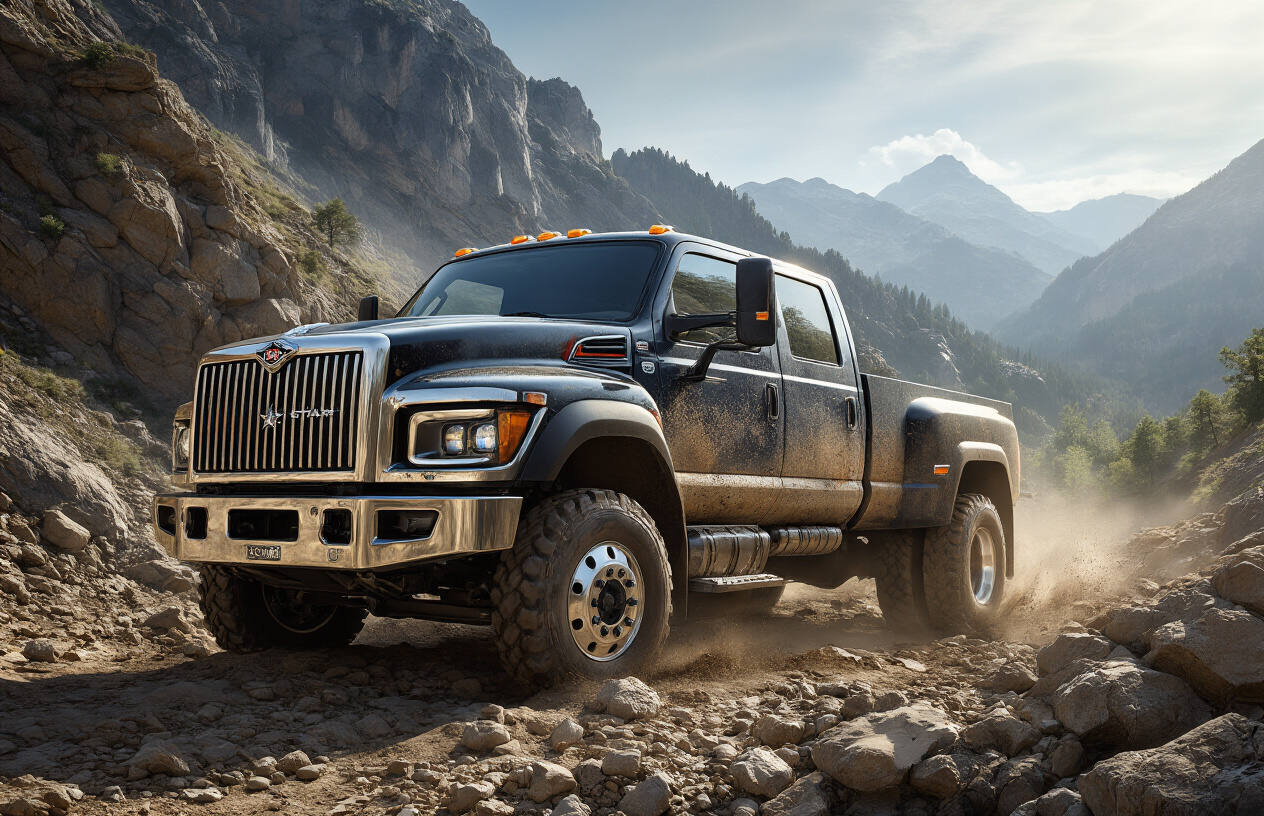
Extreme Duty Design Elements
The Western Star 49X isn’t just tough—it’s built like a tank with attitude. The reinforced steel cab features aluminum doors that reduce weight without sacrificing durability. That’s not some marketing fluff; these doors undergo slam testing that would make your car door cry.
The sloped hood isn’t just for looks. It gives drivers exceptional visibility when navigating treacherous job sites. And those headlights? They’re actually break-resistant LED beams that cut through darkness like nothing else on the market.
What really sets the 49X apart is its frame rail system. With a 12.5″ single channel frame option that delivers 3.7 million RBM (Resisting Bending Moment), this beast handles loads that would buckle lesser trucks.
Detroit Powertrain Options
Power choices? The 49X doesn’t mess around. You’ve got the Detroit DD15 Gen 5 engine pumping out up to 505 horsepower and 1,850 lb-ft of torque. Need more muscle? The DD16 cranks things up to 600 horsepower with a massive 2,050 lb-ft of torque.
Transmission options include the DT12 Vocational series with specific work-ready configurations. The off-road mode adjusts shift points and clutch engagement for maximum traction in mud, snow, or gravel.
Vocational Versatility and Applications
This truck doesn’t know the meaning of “can’t do it.” From logging operations in mountain terrain to heavy hauling across scorching deserts, the 49X adapts like a chameleon.
Mining companies love the 49X for its ability to transport heavy equipment. Construction firms rely on it for concrete mixing and dump applications. Utility companies depend on it for maintaining power infrastructure in remote locations.
The configurable chassis allows for specialized bodies including cranes, vacuum trucks, and snowplows. With a GCWR rating up to 160,000 pounds, there’s practically no job too big.
Rugged Reliability in Harsh Conditions
The 49X laughs at extreme weather. Its electrical system features waterproof connections and sealed housings that keep working in downpours that would drown smartphones.
The cooling system handles ambient temperatures up to 122°F while maintaining optimal performance. Cold weather? The standard winterfront and optional arctic packages keep everything running down to -40°F.
Maintenance intervals stretch longer than competitors, with some fleets reporting 10% fewer service events in the first year. That’s real money saved when every hour of downtime costs thousands.
Emerging Trends in Heavy-Duty Trucking

A. Electric and Hydrogen Powertrains
The trucking industry’s been shaking things up lately. Gone are the days when diesel was the only game in town. Now? Electric and hydrogen powertrains are making serious waves.
Tesla’s Semi truck is crushing expectations with a 500-mile range on a single charge. Not to be outdone, Nikola and Hyundai are betting big on hydrogen fuel cells that can refuel in minutes and still deliver zero emissions.
What’s the real appeal here? It’s not just about being green. These new powertrains slash operating costs dramatically. Fewer moving parts means less maintenance. And energy costs? Way lower than traditional diesel.
Fleet owners are doing the math:
- 70% reduction in maintenance costs
- 25-45% lower fuel costs over the vehicle lifetime
- Payload capacities now matching diesel counterparts
B. Autonomous Driving Technologies
The self-driving revolution isn’t just for cars. Heavy-duty trucks are where the real money is.
Companies like TuSimple and Waymo Via are already running Level 4 autonomous trucks on actual highways. These aren’t just concepts—they’re hauling real cargo while a human sits back just in case.
The big breakthrough? Advanced sensor fusion. By combining radar, lidar, cameras, and AI, these trucks can “see” better than any human driver. They don’t get tired. They don’t check phones. They just drive—perfectly, consistently, safely.
Platooning technology lets multiple trucks follow each other with just inches between them, creating a road train that slashes fuel consumption by up to 15% through reduced air resistance.
C. Data-Driven Fleet Management
Truck fleets are becoming data powerhouses. Every modern heavy-duty truck now generates about 1TB of data daily. And smart fleet managers are using this goldmine to transform operations.
Real-time analytics platforms from companies like Samsara and Geotab track everything from fuel efficiency to driver behavior. The results speak for themselves:
| Metric | Improvement |
|---|---|
| Fuel consumption | 12-18% reduction |
| Route efficiency | 15% improvement |
| Maintenance costs | 30% decrease |
| Driver retention | 25% increase |
The game-changer? Predictive maintenance. Algorithms now spot potential breakdowns before they happen, virtually eliminating roadside failures and the costly downtime they bring.
D. Environmental Regulations Shaping Future Designs
Truck manufacturers aren’t just adapting to new regulations—they’re racing ahead of them.
California’s Advanced Clean Trucks rule demands 40-75% of new trucks be zero-emission by 2035. The EU’s even tougher, mandating a 30% reduction in CO2 emissions by 2030. Instead of fighting these changes, industry leaders are embracing them as innovation catalysts.
The impact on design is dramatic. Aerodynamics isn’t just about looking sleek anymore—it’s essential for range optimization. New materials like carbon fiber composites are cutting weight while maintaining strength.
And it’s not just about the powertrain. Every component is being reimagined, from regenerative braking systems to solar-augmented cooling for refrigerated trailers.
E. Connected Truck Ecosystems
Today’s heavy-duty trucks aren’t just vehicles—they’re rolling data centers connected to vast digital ecosystems.
5G connectivity has unlocked real-time communication between trucks, infrastructure, and central fleet systems. This creates something revolutionary: a living, breathing transportation network that adapts instantly to changing conditions.
V2X (Vehicle-to-Everything) communication lets trucks talk directly to traffic lights, get advance warning of hazards, and coordinate with other vehicles to optimize traffic flow.
The driver experience has been transformed too. Customizable digital dashboards, voice assistants, and augmented reality windshields are becoming standard features, not futuristic concepts.
The real magic happens in the backend systems that tie everything together. AI-powered logistics platforms now automatically balance loads, optimize routes, and even negotiate delivery slots—all without human intervention.

The world of heavy-duty trucks continues to evolve with impressive engineering feats that combine power, reliability, and cutting-edge technology. From the iconic American powerhouses like the Freightliner Cascadia and Kenworth W990 to European engineering marvels such as the Volvo VNL, these road titans have transformed the transportation industry with their exceptional capabilities. Each truck brings its unique strengths—whether it’s the legendary reliability of the Peterbilt 579, the muscular performance of the Mack Anthem, or the off-road dominance of the Western Star 49X.
As we look to the future, the heavy-duty trucking industry stands at the cusp of revolutionary changes with emerging technologies focused on efficiency, sustainability, and enhanced driver experience. Whether you’re a fleet manager looking to make your next purchase decision or simply an enthusiast of these mechanical marvels, understanding what makes these trucks dominate the roads can give you valuable insights into the backbone of our global supply chain. Consider how these technological advancements might reshape the transportation landscape as these powerful machines continue to evolve and adapt to changing demands.




